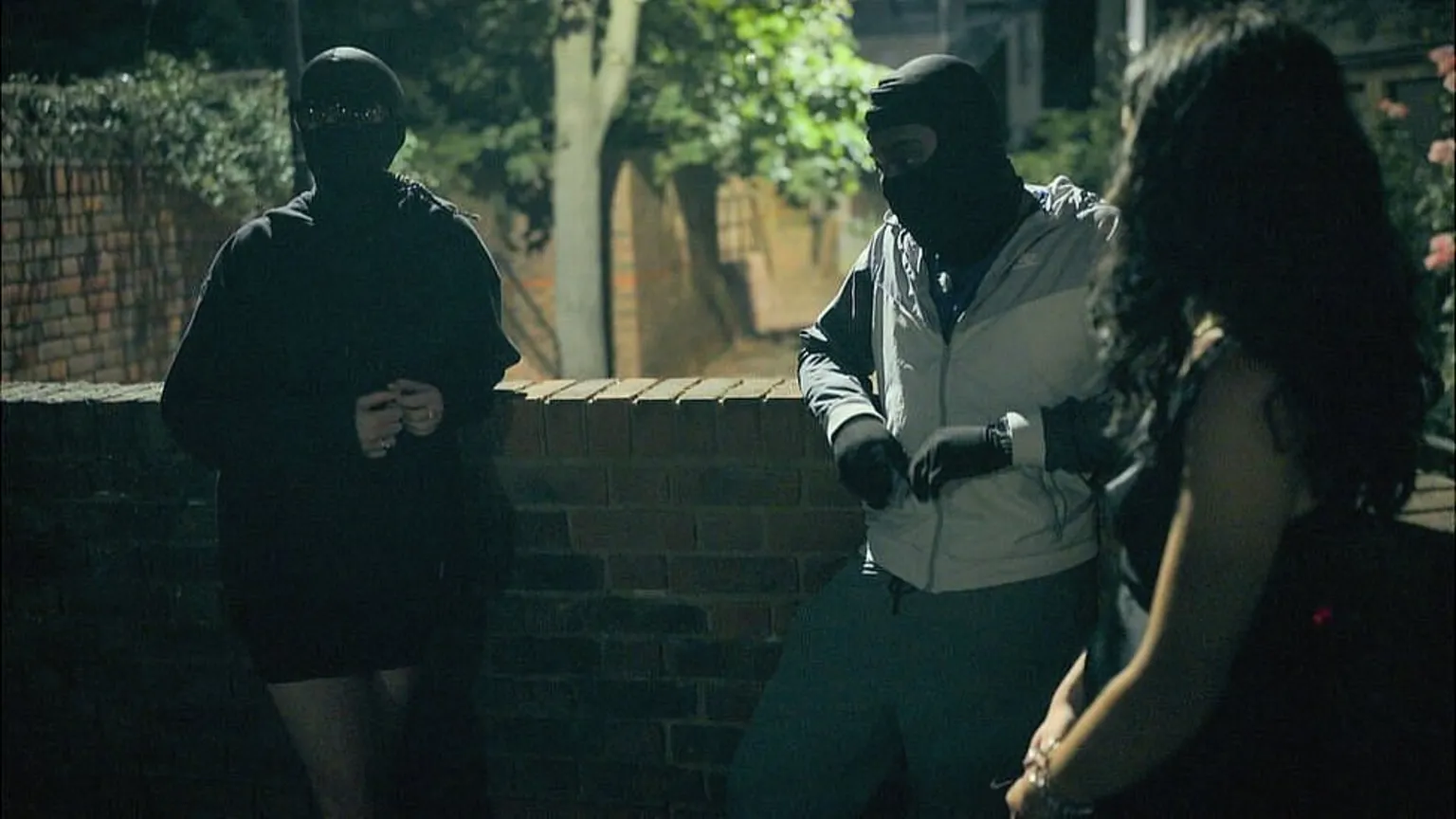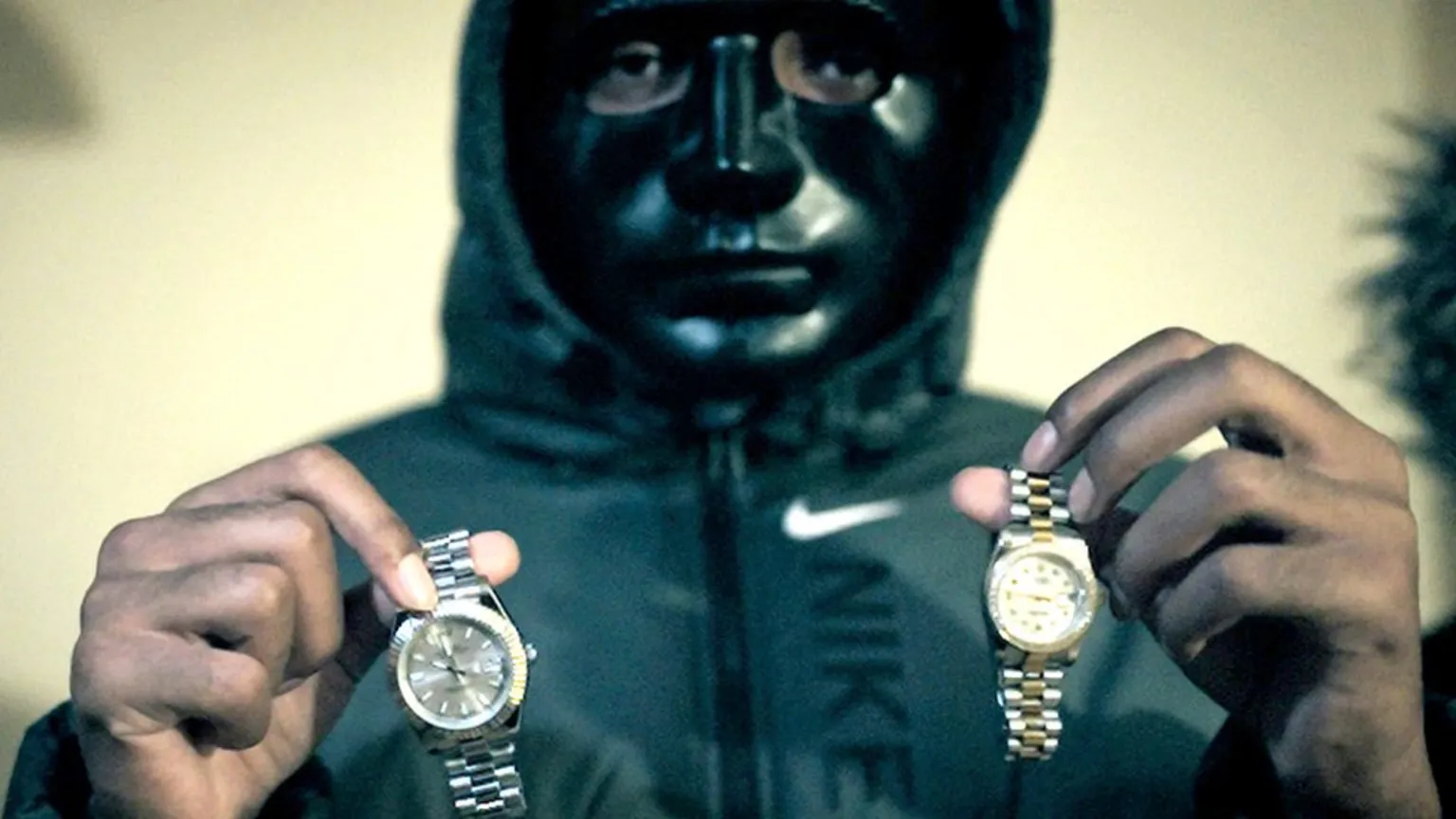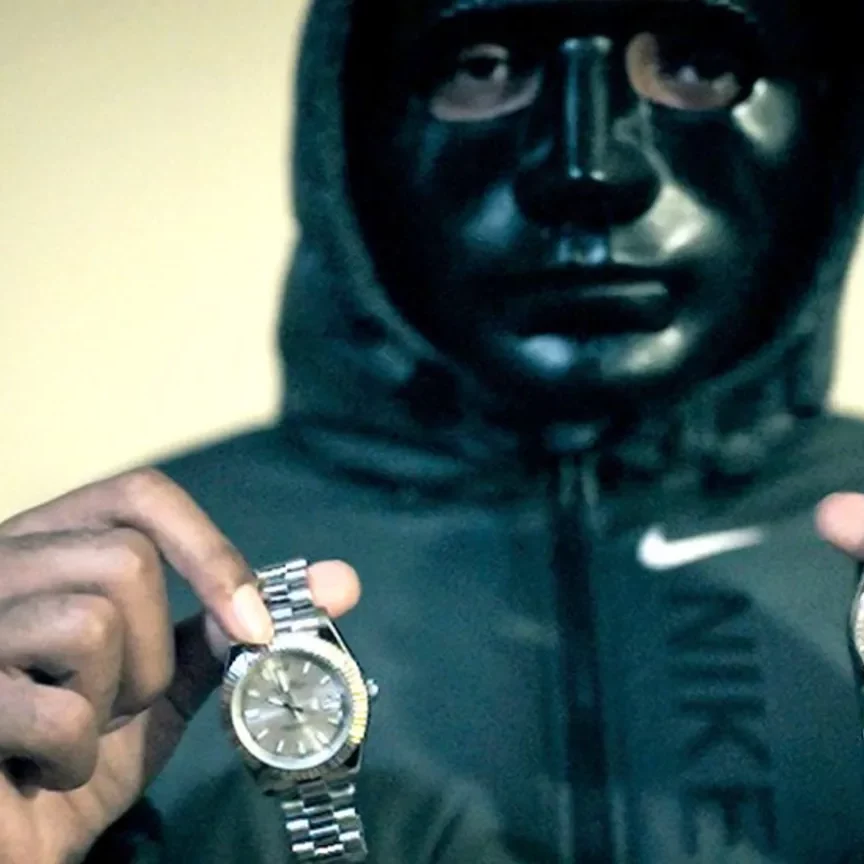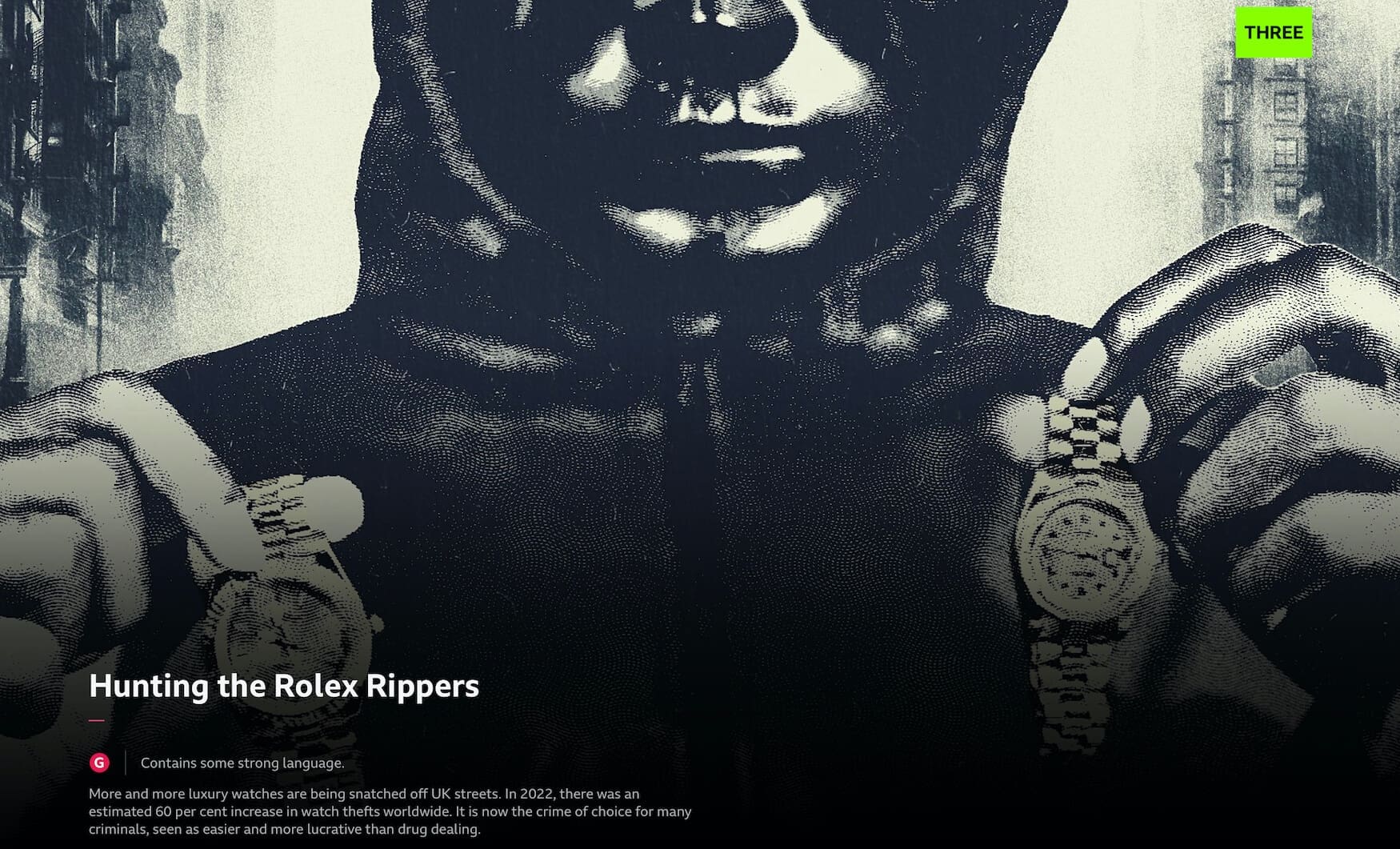BBC investigates watch theft and female spotters in London with a revealing story and documentary
Zach BlassTo the chagrin of enthusiasts and collectors worldwide, watch theft is on the rise globally. London in particular has earned a reputation for being one of the least safe places, if not the least safe place, to wear your luxury wristwatch. It is unfortunately all too commonplace to see a reel on Instagram or a local news report of moped-riding and machete-wielding criminals targeting and assaulting individuals for their watch. It has become clear, though, that this is not simply everyday pickpocketing – rather strategic and organised efforts to steal and offload watches. Long overdue, the BBC has just posted an investigative story exposing violent watch thefts in London along with a short documentary titled Hunting the Rolex Rippers.
BBC’s description of the documentary short reads: “In this documentary, journalist Tir Dhondy gets access, for the first time ever, to the gang members behind the crime. She meets the teenage moped riders snatching watches off the street, as well as a gang leader who runs a team of teenage watch rippers and female watch spotters. Tir also comes face-to-face with the 16-year-old who used a machete to steal singer Aled Jones’ £17,000 Rolex in broad daylight.”
According to Tir Dhondy of the BBC, £50M worth of watches were reported stolen in London in 2022. And in the first six months of 2023, 3,190 watches were reported stolen – a figure supplied by the Metropolitan Police. Of these 3,190 incidents, 20% involved violence against the victim. Watch theft has become so lucrative, more and more criminals seem to gravitate away from the world of drug dealing – instead electing to get in on the watch theft game. It is this clear and horrible phenomenon that has led the BBC to do an investigative report.

Both the written story and short documentary largely centre around two individuals: “Abi” and “M”. Abi (a fake name), is charged with spotting timepieces and targets and reporting back to her boss, M, who leads a London-based watch theft gang. Dhondy explains: “Her job is to go to bars and nightclubs in affluent areas of the city to look for potential male victims among the well-dressed clientele.”
Abi, who Dhondy describes as hesitant and reluctant to talk with her, explains she chats up men under the guise of trying to get a closer look if they have something worth lifting off of their wrist. Once identified, she gets in touch with M and other gang members who later arrive to hold the target up for their watch using knives and machetes to threaten their victims. Abi would later reveal to Dhondy that she feels guilty about her involvement, but that she ultimately has bills to pay. And each “job” nets her anywhere between £500 and £1,000.

Dhondy attributes Abi’s nerves to the fact M is listening in on every word, supervising the dialogue between her and Dhondy. M, by Dhondy’s description, seems much more cutthroat and unremorseful. M would explain that he studied watches at an early age, and wanted to get into the business of watch theft as early as twelve years old. It would seem all of the watches M’s gang steals are presented to him for evaluation. Dhondy personally watched two of his gang members present a watch to him that he deemed was worth £18,000.
M would even go as far as taking Dhondy out to Mayfair, one of the most affluent areas in London, to show how he plans and strategises his attacks. Dhondy recounts: “We sit in a car outside a high-end restaurant and watch dozens of people – both inside and on the street – wearing top-brand watches. M knows areas like this well and seems to have eyes in many places. He has a team of young people on mopeds tearing around the streets snatching watches off people, while wielding machetes.”
M and Abi, however, were not the only individuals involved in watch theft that Dhondy spoke to. She would also speak with two individuals, seemingly 15 or 16 years old who were watch thieves that are not affiliated with any larger gang. And, in a twist of fate while filming the documentary, she would speak with the teenager who was convicted for stealing UK singer Aled Jones’ £17,000 Rolex, wielding a machete after receiving a message from the teenage thieves themselves.
In discussing the London watch theft phenomenon with the police, Sgt Dan Naylor would rationalise that it is ultimately much easier to steal a watch than other objects of value. Naylor explained: “It’s easier to steal a watch than a car. No one is going to have £150,000 in their wallet, but they are going to have it on their wrist.”
Ironically, Dhondy revealed that M wears a £30,000 watch on his wrist. During their conversation, they were situated in a “deprived area”, and the interview was cut short. Why? Well, M was getting agitated, brandishing his gun, after spotting a group of men nearby – likely targeting the watch on his wrist along with a briefcase likely holding even more watches.
While I appreciate being able to get insight into this dark underbelly of the watch world, it baffles me as to why these criminals are willing to speak and boast about their activities with journalists. Perhaps ego, or infamy, becomes currency in the criminal underworld – letting other criminals know “who the big dogs”, as M says, are.





